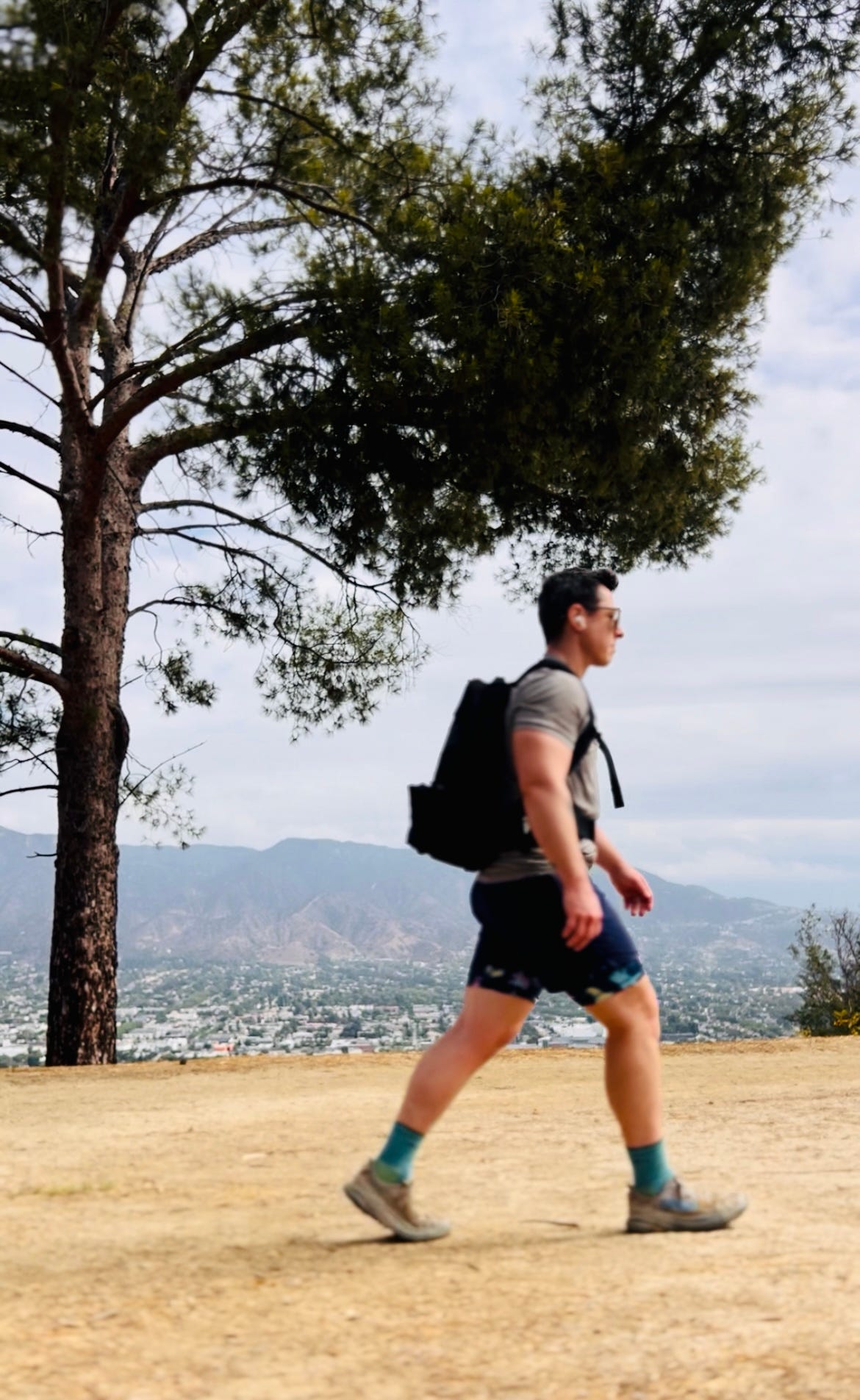How to Start Rucking This Week
The 4-week plan to walking with weight—from first ruck to daily habit
On Tuesday, I explained why going to the gym every day doesn’t make you active—it’s what you do with the other 23 hours.
NEAT (Non-exercise Activity Thermogenesis) accounts for all the movement outside your workouts:
Taking the stairs
Standing/treadmilling while you work
Walking your dog
Parking at the back of the lot
These movements compound across the day into hundreds or thousands of calories burned and hours of activity.
The solution I’ve been using since 2020 to increase my NEAT: walking with weight, otherwise known as “rucking.”
What is rucking?
Rucking originated in military training—soldiers carrying loaded packs over distance. For you, it can mean wearing weight in a backpack or vest while doing activities you’re already doing (e.g. wearing a 10-lb rucksack while walking your dog). You’re combining cardiovascular conditioning with load-bearing strength without carving out additional training time.
Humans evolved to carry weight over distance. We’re the only mammal that can pick up weight and carry it for miles. That ability shaped our anatomy and allowed us to thrive—carrying food back to camp, tools into unknown territory, supplies across continents.
When you carry sustained weight over distance at slow speeds, your body adapts differently than it does to high-intensity bursts. You’re building load-bearing capacity, strengthening connective tissue, and training for real-world demands—not just gym performance.
I started rucking in 2020 during COVID to improve my backpacking and running endurance. Back then, I cycled through vest-style backpacks that I could weigh down with heavy sandbags and soft padding like my sleeping bag. I hadn’t bought an official ruck pack with weight plates or weighted vest yet. I’ve always liked walking, hiking, and trail running with weight—it made me feel like I was doing something fairly simple but a little harder, which would give me outsized gains.
If you’re a backpacker: Rucking is the best training you can do between trips. You’re building the exact load-bearing capacity and endurance you need on the trail—without needing to plan a full trip.
What you need to start rucking
To start this week, you need three things:
Any sturdy, comfortable backpack you already own. Preferably with a chest strap. You don’t need a waist strap yet—mine didn’t feel necessary until I hit 30 lbs. You’ll know you need one when you think “this would be way more comfortable with a hip belt.”
5-10 lbs of “soft” weight. I say soft because things with hard edges poke you when they shift. Soft weight packs down better and stays stable. I started with sandbags and quinoa wrapped in a sleeping bag.
Supportive shoes. You’re carrying extra weight, so your feet, ankles, and knees need proper support. Don’t ruck in Vans.
That’s it. Don’t overthink this. The goal is to start, not to have perfect gear.
If you decide to invest in purpose-built equipment:
My current pack is a GORUCK Rucker 4.0 (25L) with weight plates—10, 20, and 30 lbs. I started with just the 10-lb plate, increased to 20, and now use 30 (max capacity is 60 lbs, which is what I’m working towards). The Rucker 4.0 (GORUCK | Amazon) works well for rucking because it has an elevated plate pocket that keeps weight high and secure against your back (the preferred position for rucking), extra-padded shoulder straps, and non-abrasive fabric that prevents friction burn.
The padded hip belt matters at higher weights. Without it, all the weight sits on your shoulders, which can get uncomfortable after about 15 lbs (though it really depends on your body structure, composition, and current fitness level). Having a hip belt distributes the load to your hips.
Good shoes matter even more as you progress. I use Hoka Speedgoat trail running shoes with substantial support for pronation because I’m carrying 30 lbs on top of my body weight. You’ll know if you’re wearing the wrong shoes—your feet, ankles, or knees will tell you through discomfort or pain.
Your First Four Weeks
I recommend starting with 5-10 lbs. This range is enough to feel the difference from regular walking, but light enough that you can focus on form and adaptation without fatigue breaking down your posture.
From here you’ll learn:
-Weeks 1-4 of the getting started plan
-The mistakes I made (and how to avoid them)
-How rucking compares to running and lifting
-Answers to the most common rucking questions (gear, weight limits, injury prevention, results)
Keep reading with a 7-day free trial
Subscribe to rawlogy labs to keep reading this post and get 7 days of free access to the full post archives.


